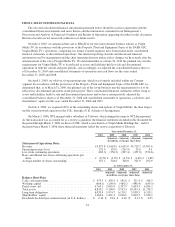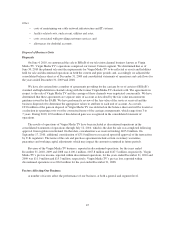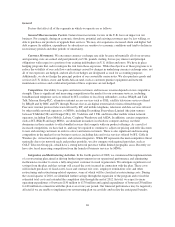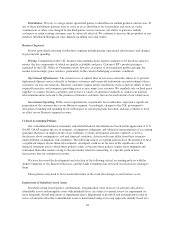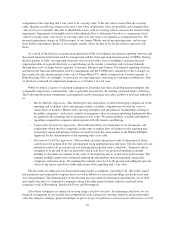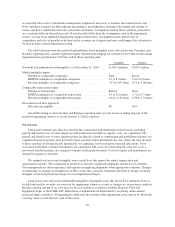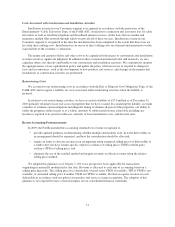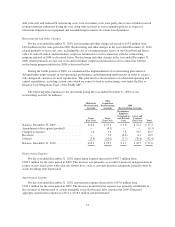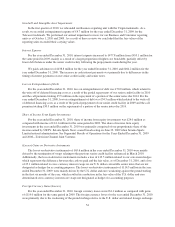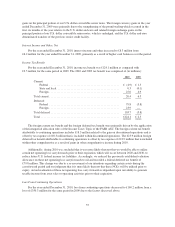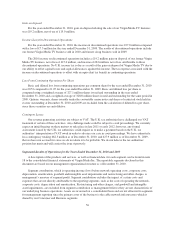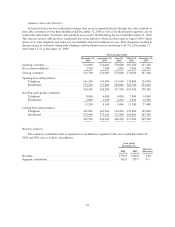Virgin Media 2010 Annual Report Download - page 54
Download and view the complete annual report
Please find page 54 of the 2010 Virgin Media annual report below. You can navigate through the pages in the report by either clicking on the pages listed below, or by using the keyword search tool below to find specific information within the annual report.Costs Associated with Construction and Installation Activities
Installation revenue for our Consumer segment is recognized in accordance with the provisions of the
Entertainment—Cable Television Topic of the FASB ASC, in relation to connection and activation fees for cable
television, as well as fixed line telephone and broadband internet services, on the basis that we market and
maintain a unified fiber network through which we provide all of these services. Installation revenue in our
Consumer segment is recognized at the time the installation has been completed to the extent that those fees are
less than direct selling costs. Installation fees in excess of direct selling costs are deferred and amortized over the
expected life of the customer’s connection.
The nature and amount of labor and other costs to be capitalized with respect to construction and installation
activities involves significant judgment. In addition to direct external and internal labor and materials, we also
capitalize other costs directly attributable to our construction and installation activities. We continuously monitor
the appropriateness of our capitalization policy and update the policy when necessary to respond to changes in
facts and circumstances, such as the development of new products and services, and changes in the manner that
installations or construction activities are performed.
Restructuring Costs
We account for our restructuring costs in accordance with the Exit or Disposal Cost Obligations Topic of the
FASB ASC and recognize a liability for costs associated with restructuring activities when the liability is
incurred.
In relation to our restructuring activities, we have recorded a liability of £57.6 million as of December 31,
2010 primarily relating to lease exit costs of properties that we have vacated. In calculating the liability, we make
a number of estimates and assumptions including the timing of ultimate disposal of the properties, our ability to
sublet the properties either in part or as a whole, amounts of sublet rental income achievable including any
incentives required to be given in subleases, amounts of lease termination costs, and discount rates.
Recent Accounting Pronouncements
In 2009, the FASB amended the accounting standards for revenue recognition to:
• provide updated guidance on determining whether multiple deliverables exist, how the deliverables in
an arrangement should be separated, and how the consideration should be allocated;
• require an entity to allocate revenue in an arrangement using estimated selling prices of deliverables if
a vendor does not have vendor-specific objective evidence of selling price (VSOE) or third-party
evidence (TPE) of selling price; and
• eliminate the use of the residual method and require an entity to allocate revenue using the relative
selling price method.
We adopted this guidance as of January 1, 2011 on a prospective basis applicable for transactions
originating or materially modified after that date. Revenue is allocated to each unit of accounting based on a
selling price hierarchy. The selling price for a deliverable is based on its VSOE if available, TPE if VSOE is not
available, or estimated selling price if neither VSOE nor TPE is available. We then recognize revenue on each
deliverable in accordance with our policies for product and service revenue recognition. The adoption of this
guidance is not expected to have a material impact on our consolidated financial statements.
51


